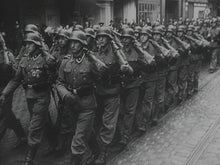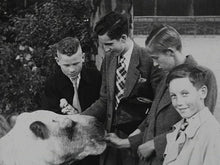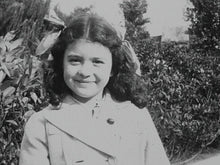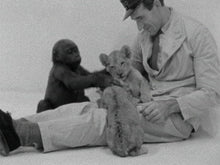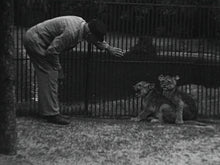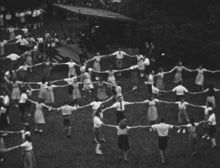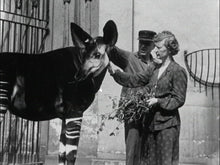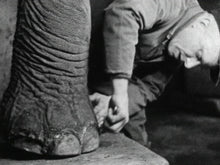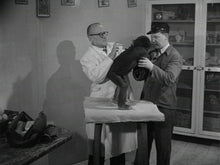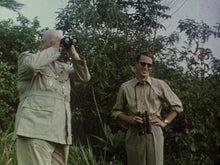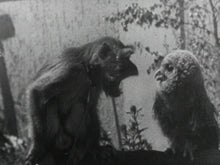
Long ago, when gentlemen still wore hats and cars were an unusual sight in the streets, when the ZOO was still known as 'Jardin Zoologique d'Anvers', there were already exotic animals living in the city on the Scheldt. They lived near Central Station, where they served as exotic scenery for the Sunday afternoon promenade of the well-to-do bourgeoisie. The whole world has changed in the past hundred years. The animals haven't, and are therefore privileged witnesses of what the past hundred years have done to us. In collaboration with the Antwerp ZOO and the city event 'Antwerp Animalized', the Royal Belgian Film Archive presents a unique anthology of rarely shown film material from days long gone. The oldest images date from the 1910s. The most recent ones are from 1960. The silent films are accompanied on the piano by Hughes Maréchal.
CONTENT
At Antwerp zoo [ca. 1910]
Urban views from Picturesque Antwerp followed by At Antwerp zoo. In succession we see a panoramic view of the port as seen from the cathedral and pictures of Pelikaanstraat, De Keyserlei and Meir filmed from a tram as it travels along. At Antwerp zoo shows life at the ZOO, 'one of the most remarkable in Europe', between 1907 and 1914. These latter images have been coloured in by hand. The film is accompanied on the piano by Hughes Maréchal.
Gay twenties [before 1930]
A compilation of image fragments from the end of the twenties that show the ZOO. The ZOO emerges here mainly as a meeting place. The images are accompanied on the piano by Hughes Maréchal.
1943: one hundred years of the ZOO [1943-1944]
News images from the war years: German soldiers and boys and girls from the Hitler Jugend march in a procession organised by 'DeVlag' on the occasion of the commemoration of the Battle of the Golden Spurs. The procession heads for the zoo's conference hall via Suikerrui, Groenplaats, Meir, De Keyserlei and finally Astridplein. In spite of the difficulties caused by the war, Antwerp ZOO celebrates its centenary in 1943.
Liberation [1944]
Footage shot by the British army during the liberation of Antwerp in 1944. We see German soldiers imprisoned in animals' cages. Then long rows of German prisoners of war are taken away from Astridplein to their following destination.
ZOO news [1940 - 1960]
A compilation of reports, archive images and fragments from cinema newsreels from the forties to the sixties. In 1948 there is the inauguration of a new bird enclosure and the ZOO welcomes new lodgers from the Belgian Congo, including a few examples of the rare okapi. In the fifties the ZOO opens its own bird reserve and animals from the Sudan arrive at Deurne airport. In the sixties extensive building works occur in order to adapt the animal enclosures to modern day requirements.
Summer 1947 [1947]
Amateur film, in which the visitor can be seen, made in the summer of 1947.
A ZOOful of people [1940-1960]
An anthology of images in which the social, cultural and educational activities of the ZOO are key: zoo lessons for children, dancing and folk festivals, an Easter celebration for young children. In addition, the ZOO also took part in activities that occurred outside its walls, such as the Antwerp 'Ommeganck' in 1948.
Glimpses behind the scenes [1949]
An educational film from 1949 about looking after the animals 'behind the scenes'. Not only sick animals but also healthy animals require the necessary attention.
Family boarding house [1955]
The numerous animals that live at Antwerp zoo can rely on a small army of chefs and kitchen personnel to provide them with appropriate meals. Scientific tests are carried out in order to improve the animals' living conditions. Deceased animals are dissected in order to establish the cause of death. Everything is carefully recorded on index cards by the scientific personnel.
A visit to the Oceanographic Institute of Monaco [1950]
This film, made for the ZOO, is a filmed report of a trip from Antwerp to the Oceanographic Institute of Monaco and back to collect all kinds of fish and turtles. During the trip there the lorry from Antwerp ZOO is accompanied by the Vandevelde brothers from Kessel-Lo, who are on their way to Algeria for their annual reptile hunt. Once they have arrived in Monaco the film crew goes out on the Institute's boat that sets out every day in search of exotic species of fish in the Mediterranean.
Gust [1953]
A film without sound about Gust the gorilla - one of the best known animals from the ZOO - and his keeper Samson. We follow a day in the life of the young Gust, who only recently arrived in the ZOO. The playful gorilla is washed and taken care of, undergoes a medical and during playtime meets up with two lion cubs and a teddy beer. This is followed by a walk through the zoo among the interested visitors. The film is accompanied on the piano by Hughes Maréchal.
An okapi for King Baudouin [1955]
A fragment from Bwana Kitoko, the well known documentary by André Cauvin about the King Baudouin's first tour of the Belgian Congo and Ruanda-Urundi in 1955. On the orders of the hunting officer of the General Government in Epulu a tribe of pygmies catch an okapi in the jungle. This live example is presented to King Baudouin as a memento of his trip.
Ali the Monkey [before 1947]
'Scientific' film in which a professor Vermeylen explains how animals' natural instincts can be changed by means of training.
Madame Babylas loves animals [1911]
An early silent film by French pioneer Alfred Machin, who also worked in Belgium and filmed a number of burlesques there. Madame Babylas really loves animals and can't resist taking more and more animals into her home. Her man looks on despairingly as the house gradually changes into a real zoo. He is intent on revenge… Piano accompaniment by Hughes Maréchal.
Length: 140'
Languages: French, Dutch
Subtitles and navigation: English, French, Dutch
Regional code: PAL (region free)


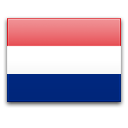

![In den dierentuin van Antwerpen [ca. 1910]](http://cinematek.myshopify.com/cdn/shop/products/IndendierentuinvanANtwerpen_1_{width}x.jpg?v=1606831159)
![In den dierentuin van Antwerpen [ca. 1910]](http://cinematek.myshopify.com/cdn/shop/products/IndendierentuinvanAntwerpen_2_{width}x.jpg?v=1606831159)
![In den dierentuin van Antwerpen [ca. 1910]](http://cinematek.myshopify.com/cdn/shop/products/IndendierentuinvanAntwerpen_3_{width}x.jpg?v=1606831159)
















![Load image into Gallery viewer, In den dierentuin van Antwerpen [ca. 1910]](http://cinematek.myshopify.com/cdn/shop/products/IndendierentuinvanANtwerpen_1_110x110@2x.jpg?v=1606831159)
![Load image into Gallery viewer, In den dierentuin van Antwerpen [ca. 1910]](http://cinematek.myshopify.com/cdn/shop/products/IndendierentuinvanAntwerpen_2_110x110@2x.jpg?v=1606831159)
![Load image into Gallery viewer, In den dierentuin van Antwerpen [ca. 1910]](http://cinematek.myshopify.com/cdn/shop/products/IndendierentuinvanAntwerpen_3_110x110@2x.jpg?v=1606831159)

